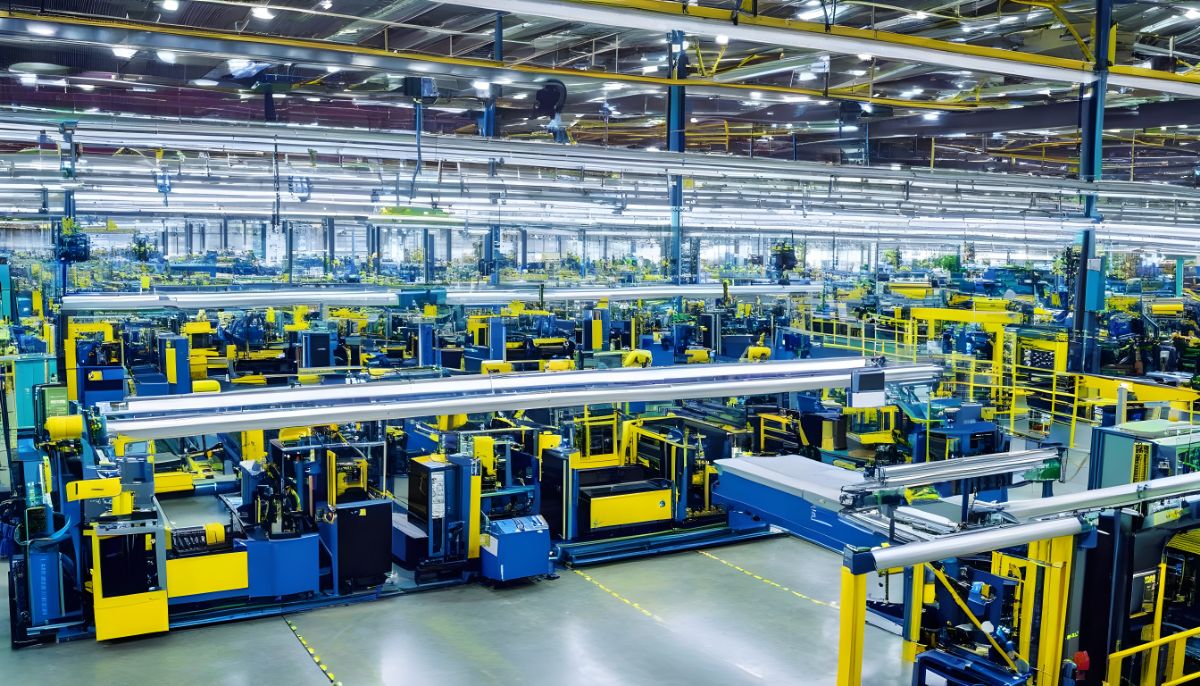Contents
The Move Towards Sustainable Manufacturing
Imagine a world where factories don’t spew smoke and noise but hum with the quiet efficiency of a beehive. Where resources are treated not as plunder but as precious guests. The products we use are not just built to last, but to regenerate the very planet that birthed them. This, my friends, is the not-so-distant future of manufacturing, driven by a force as powerful as any engine: sustainability.
The Glaring Reality of Our Industrial Footprint
For decades, the story of the industry has been one of relentless consumption. We’ve plundered natural resources, belched greenhouse gases, and choked waterways with industrial waste. The consequences are undeniable: a warming planet, dwindling resources, and a growing sense of unease about the legacy we’re leaving for future generations.
The numbers paint a stark picture. According to the Ellen MacArthur Foundation, a staggering 95% of materials used in product manufacturing become waste. The World Wildlife Fund reports that industrial activity accounts for over 20% of global greenhouse gas emissions. These are not mere statistics; they are the alarm bells of a planet on the brink.
But wait, there’s a plot twist!
The story of industry isn’t over yet. Amidst the din of machines and the haze of pollution, a quiet revolution is brewing. A revolution driven by innovation, ingenuity, and a deep respect for the planet. This is the rise of sustainable manufacturing.
Sustainable Manufacturing: Beyond Buzzwords
Sustainable manufacturing isn’t just about slapping a green label on a product. It’s a complete overhaul of the industrial mindset, a metamorphosis from caterpillar to butterfly. It’s about:
- Resource efficiency: minimizing waste and maximizing the use of recycled materials. Imagine car parts made from recycled fishing nets or buildings constructed with sustainably sourced timber.
- Energy conservation: harnessing renewable energy sources like solar and wind power and optimizing processes to reduce energy consumption. Picture factories bathed in the soft glow of solar panels, their machines purring on clean, green electricity.
- Closed-loop systems: designing products and processes that regenerate resources instead of depleting them. Think of shoes that decompose into nutrient-rich compost at the end of their lives or factories that treat wastewater and use it for irrigation.
The Unsung Heroes: The Technologies Driving the Change
This sustainable revolution isn’t powered by magic but by a whole arsenal of cutting-edge technologies:
- 3D printing: creating complex parts with minimal waste, reducing the need for traditional manufacturing methods that generate scraps.
- Industrial biotechnology: using microbes and enzymes to break down waste and create new materials, like bioplastics made from corn starch.
- Artificial intelligence: optimizing production processes, predicting equipment failures, and identifying areas for improvement.
The Human Touch: The Secret Sauce of Sustainability
But technology alone is not enough. The true drivers of sustainable manufacturing are the people behind it. The engineers who dream up new solutions, the factory workers who meticulously implement them, and the consumers who demand change. It’s a collective effort, a symphony of minds and hearts working in unison to create a better future.
The Story Doesn’t End Here
The journey towards sustainable manufacturing is long and winding, with challenges and setbacks along the way. But the potential rewards are immense: a healthier planet, a more resilient economy, and a future where industry and nature co-exist in harmony.
- More Read: The Growth of the Circular Economy
- More Read: The AI Revolution: No Longer Buzzwords, Now Everyday Bread (and Baristas) in 2024
So, the next time you pick up a product, remember the invisible hand that guided its creation. The hand of innovation, technology, and most importantly, the collective will to build a better future. Let’s be the generation that rewrites the story of industry, not as a tale of plunder but as an epic saga of sustainable creation.
Because the future of manufacturing isn’t just green; it’s human.
Sources:
- Ellen MacArthur Foundation: https://www.ellenmacarthurfoundation.org/
- World Wildlife Fund: https://www.worldwildlife.org/
- Sustainable Manufacturing: https://www.epa.gov/sustainability/sustainable-manufacturing
I hope this blog post provides a fresh perspective on sustainable manufacturing, delving into the often-overlooked human element and the exciting technological advancements driving the change. Remember, the story of sustainability is still being written, and we all have a role to play. Let’s be the authors of a future where industry and nature thrive together.

